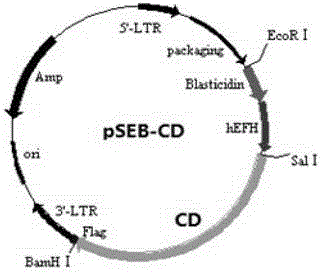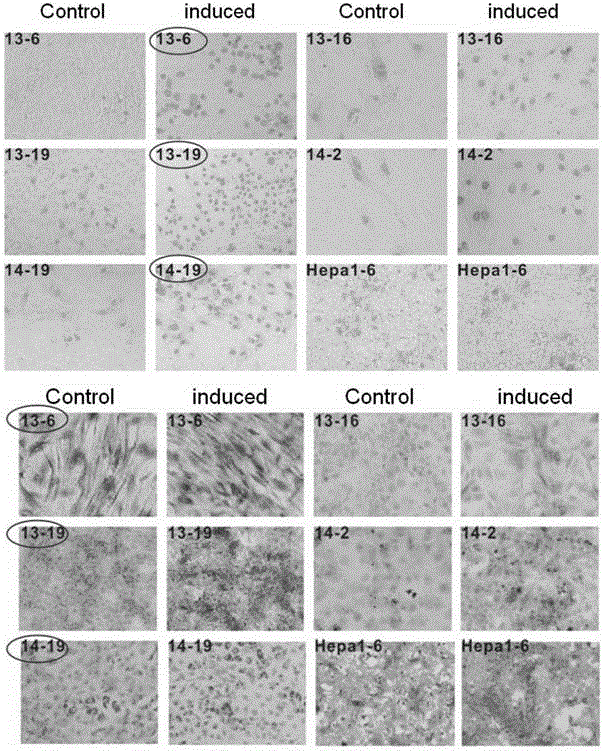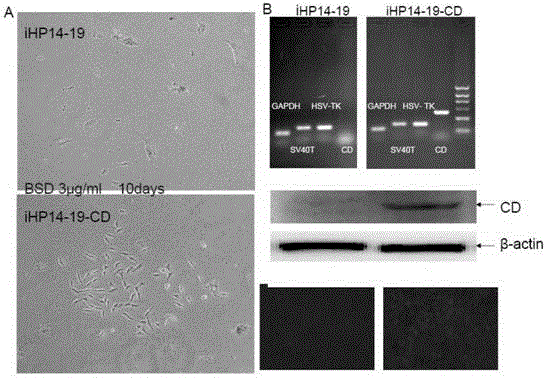Recoverable immortalized hepatic cell line carrying double suicide genes and establishing method of recoverable immortalized hepatic cell line
A suicide gene and construction method technology, applied in the field of cell biology, can solve problems such as the inability to guarantee the removal of immortalized genes, affect cell differentiation and functional maturation, and the danger of cell transformation, so as to reduce the difficulty and risk of application and ensure biological safety , the effect of reducing the risk
- Summary
- Abstract
- Description
- Claims
- Application Information
AI Technical Summary
Problems solved by technology
Method used
Image
Examples
Embodiment 1
[0049] A recoverable immortalized liver cell strain and a construction method thereof, comprising the following steps:
[0050] 1. Construction of hepatic progenitor cells carrying SV40T immortalization gene and HSV-TK suicide gene, single clone screening and biological character identification
[0051] 1) Obtaining hepatic progenitor cells: Hepatic progenitor cells were isolated from the mouse liver at the embryonic stage of 12.5-14.5 d, and 3 days after isolation, they grew in colony-like aggregates, closely embedded in polygons, and some cells could be seen with binuclear cells. Heterogeneous (round, oval, spindle, polygonal), some cells flattened and grew slowly. Retroviruses were packaged with SSR69 retroviral plasmid (carrying SV40T immortalization gene and HSV-TK suicide gene), infected cells, and screened by hygromycin 5μg / ml resistance pressurization. The immortalized cells obtained were clone-like growth, active cell proliferation, typical epithelioid cell morpholog...
PUM
 Login to View More
Login to View More Abstract
Description
Claims
Application Information
 Login to View More
Login to View More - R&D
- Intellectual Property
- Life Sciences
- Materials
- Tech Scout
- Unparalleled Data Quality
- Higher Quality Content
- 60% Fewer Hallucinations
Browse by: Latest US Patents, China's latest patents, Technical Efficacy Thesaurus, Application Domain, Technology Topic, Popular Technical Reports.
© 2025 PatSnap. All rights reserved.Legal|Privacy policy|Modern Slavery Act Transparency Statement|Sitemap|About US| Contact US: help@patsnap.com



